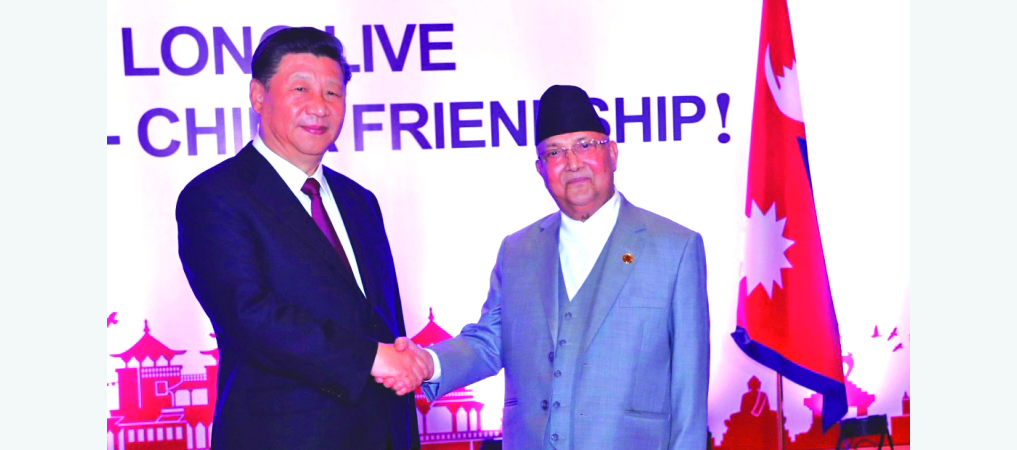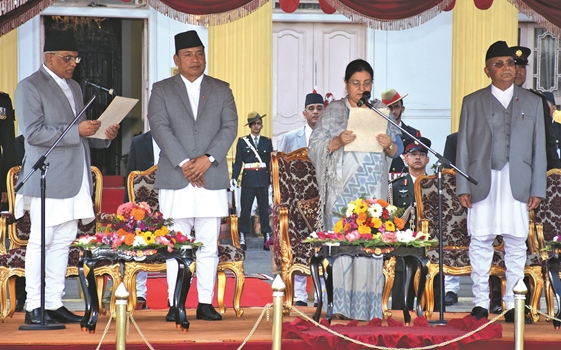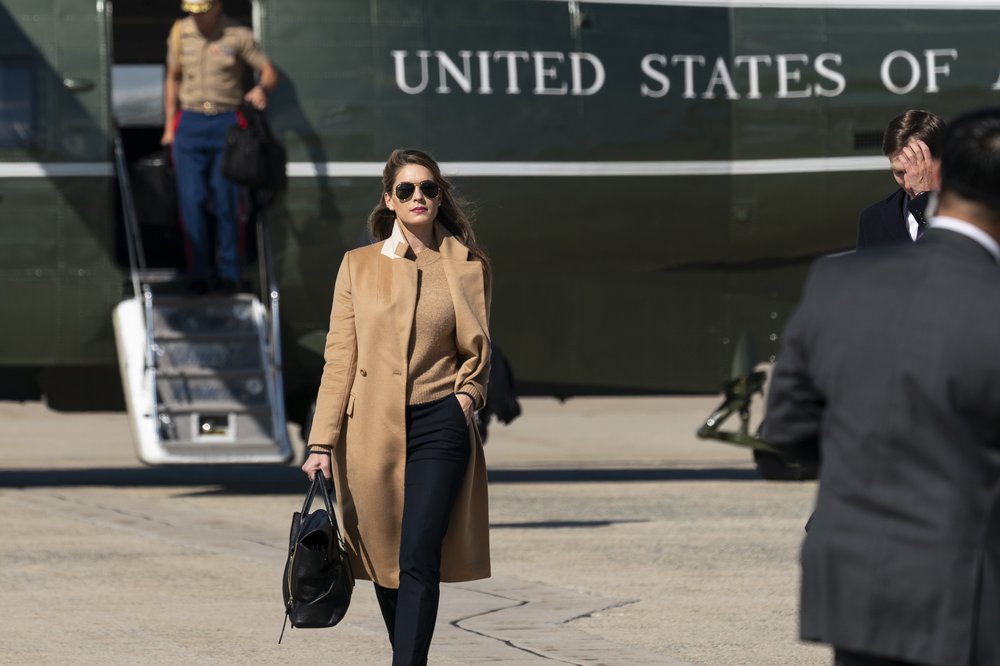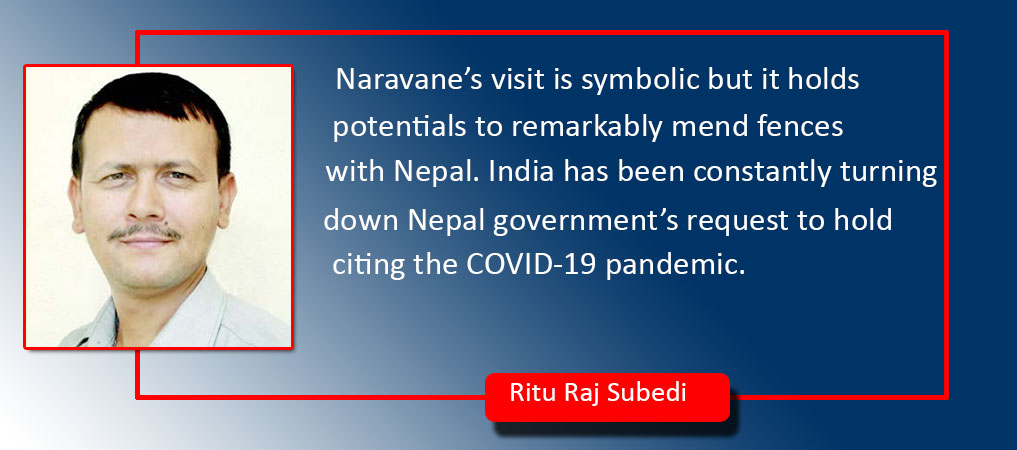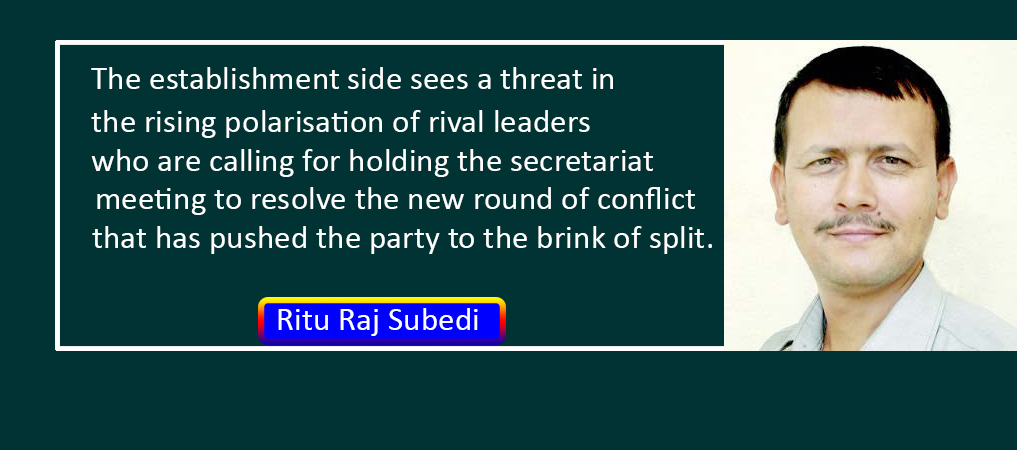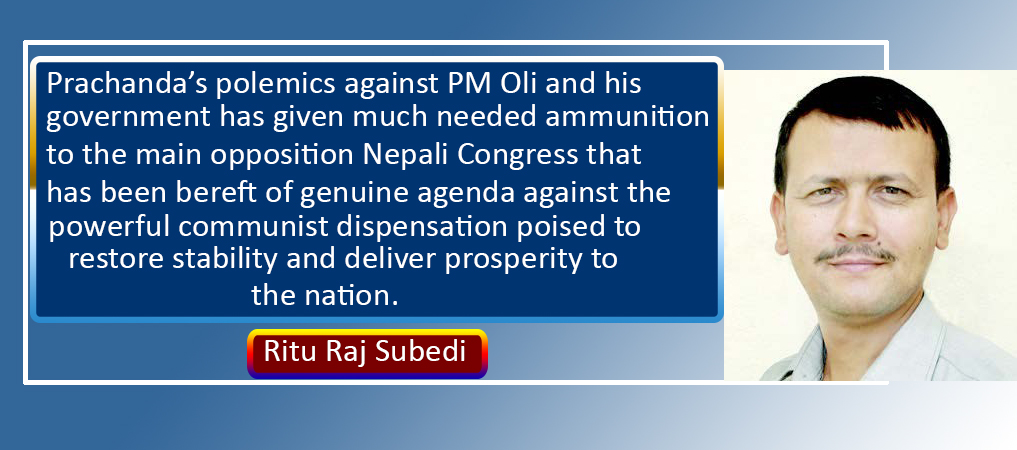Sagarmatha Elevates Nepal-China Bonhomie
Ritu Raj Subedi
This year marks the 65th anniversary of the establishment of diplomatic relations between Nepal and China. Owing to the COVID-19 pandemic, formal functions could not take place to commemorate the occasion. But the government and political parties from the two nations participated in a string of activities via digital platforms to enhance their practical cooperation in the fields of politics, economy, trade, health, diplomacy and so on. The two sides shared their experiences and took collective action against the pandemic. China has been providing medical goods and equipment to Nepal in several phases to fight the deadly virus.
Symbolic value
Towards the end of this year, Nepal received a high profile visitor from China. Just last week, the two neighbours jointly announced that the height of Sagarmatha/Qomolangma grew by 86 centimetres. The surveyors of both nations concluded that its height is now 8,848.86 metres. The increase in the elevation of Sagarmatha (Mt. Everest) is purely a natural phenomenon but it carries a great symbolic value. In it, the two nations have found an enhanced metaphor to cement their age-old relations with fresh perspective. It has boosted Nepal’s self-confidence and technical ability to gauge the highest peak in the freezing temperature.
The new official measurement puts all contradictory claims regarding its height to rest once and for all. Different countries have found different heights of the world’s highest peak. Its previous official measurement was 8,848 metres. Both Nepal and China have now shared the same measurement of Mt. Everest known as the world’s roof. It has become an “eternal symbol” of friendship between the two neighbours. To the West, China sends signals that it has further fostered its bond with Nepal, and any anti-Chinese geopolitical gambit being played on the Nepali soil will most likely go up in smoke.
In the third week of October, the first conference of Nepal-China Political Parties’ Joint Consultation Mechanism on Belt and Road Cooperation was organised. The International Department of Communist Party of China (IDCPC) interacted with the leaders of different Nepali political parties, including ruling and opposition. This coincided with the first anniversary of the visit of Chinese President Xi Jinping to Nepal. The landmark trip of a Chinese President after a gap of 23 years elevated Nepal-China ties into a strategic level. The formation of the joint mechanism is expected to give impetus to the vital accords signed during and before Xi’s visit. In their digital discussions, Nepali political parties have pledged support to realising the Trans-Himalayan Multi-Dimensional Connectivity Network under the broader framework of Belt and Road Initiative (BRI).
However, there is little progress in selecting and implementing the specific BRI projects. During his recent visit to Nepal, Chinese State Councillor and Defence Minister Wei Fenghe emphasised implementing the past agreements, including BRI-related infrastructural projects, to the benefits of both nations. The lack of political willpower and bureaucratic hassle has been attributed to the delay in identifying crucial BRI projects in Nepal. The ruling Nepal Communist Party (NCP) has kept ideological proximity and fraternal ties with the CPC since long but it has apparently failed to maximise the inter-party ties to muster desired support from the northern neighbour for the country’s economic transformation.
The CPC has been according priority to the inter-party relations to consolidate its reconstruction, elevate its governance capacity and improve the country’s general diplomacy and international status. Accordingly, it has maintained good ties with Nepal’s major and small political parties, which have expressed their firm commitment to One-China policy and not to allow anyone to use Nepal’s territory against the northern neighbour. However, of late, China’s relationship with main opposition Nepali Congress (NC) has been strained with its lawmaker of Karnali state Jeevan Bahadur Shahi accusing it of encroaching upon the Nepali land in Humla district. But his claim has been refuted by the Ministry of Foreign Affairs, Nepal.
BP’s role
Infuriated by Shahi’s constant claims of land encroachment, the Kathmandu-based Chinese Embassy wrote a letter to the NC on Nov. 13, stating that his ‘claims are not only contrary to the facts but also amount to deliberately undermining the friendly relations between our two countries to which the Nepali Congress has always been committed to’. The embassy has also reminded that NC had made tremendous efforts to settle border question through friendly consultations. The then prime minister BP Koirala had signed the Agreement on the Question of the Boundary with China, laying a ‘solid foundation for the development of friendly relations between the two nations’. It is also worth mentioning here that, during his visit to China in 1960, BP Koirala held candid talks with Chairman Mao and Premier Zhou Enlai and succeeded to amicably solve dispute on Sagarmatha. It sounds irrational to create an artificial problem to sour relations with a good neighbour at a time when the country stands to deal with a bundle of geopolitical challenges.
(Deputy Executive Editor of The Rising Nepal, Subedi writes regularly on politics, foreign affairs and other contemporary issues. subedirituraj@yahoo.com)
Recent News

Do not make expressions casting dout on election: EC
14 Apr, 2022
CM Bhatta says may New Year 2079 BS inspire positive thinking
14 Apr, 2022
Three new cases, 44 recoveries in 24 hours
14 Apr, 2022
689 climbers of 84 teams so far acquire permits for climbing various peaks this spring season
14 Apr, 2022
How the rising cost of living crisis is impacting Nepal
14 Apr, 2022
US military confirms an interstellar meteor collided with Earth
14 Apr, 2022
Valneva Covid vaccine approved for use in UK
14 Apr, 2022
Chair Prachanda highlights need of unity among Maoist, Communist forces
14 Apr, 2022
Ranbir Kapoor and Alia Bhatt: Bollywood toasts star couple on wedding
14 Apr, 2022
President Bhandari confers decorations (Photo Feature)
14 Apr, 2022



